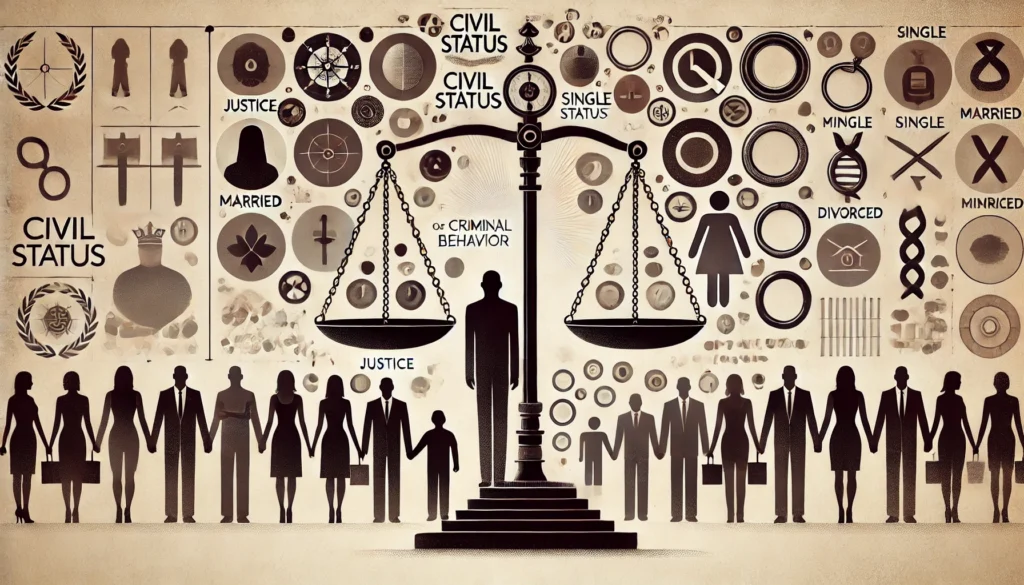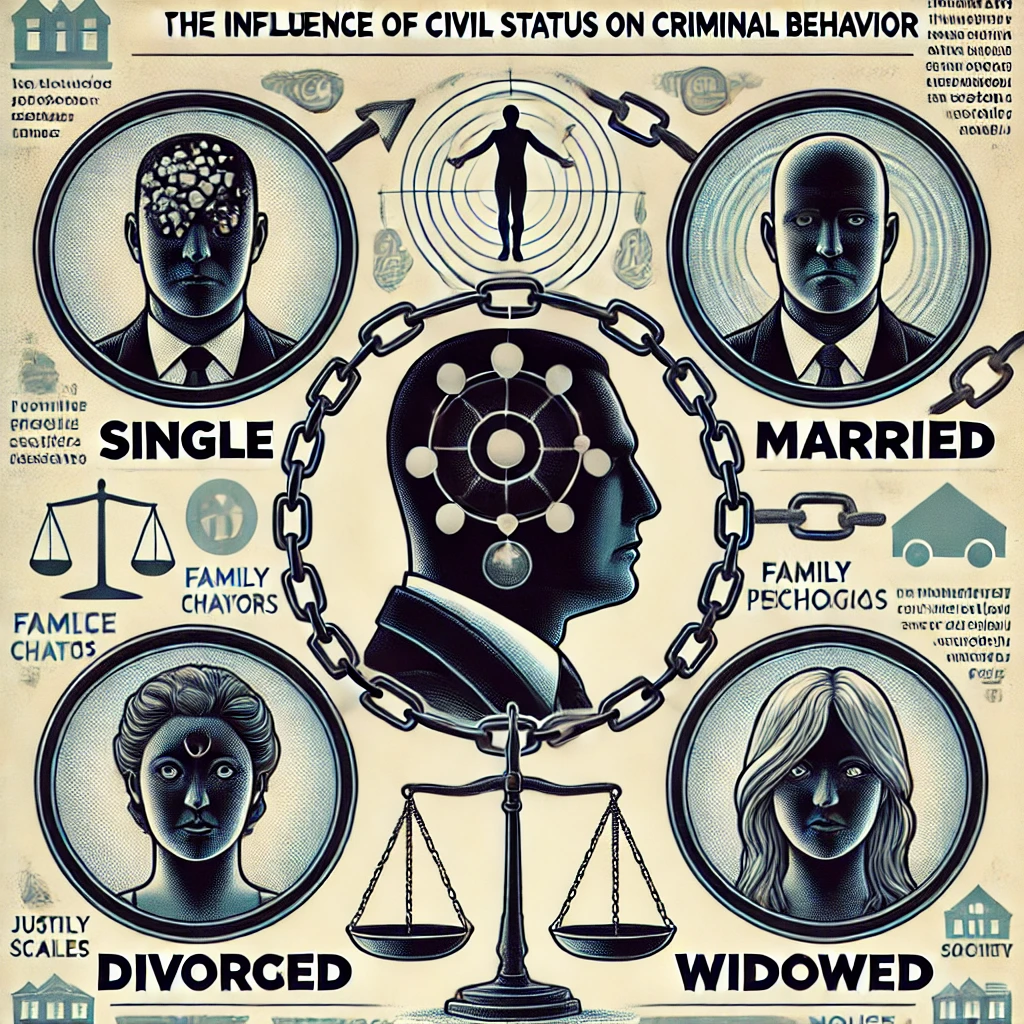Criminal behavior is a complex phenomenon influenced by a variety of social, psychological, and environmental factors. Among these, civil status—whether an individual is single, married, divorced, or widowed—plays a significant role. Understanding how civil status affects criminal tendencies can provide insights into social structures and guide policymakers in developing targeted prevention strategies.
This article explores the relationship between civil status and criminal behavior, analyzing how marital relationships, family dynamics, and social support networks contribute to crime rates. It also examines the implications for rehabilitation and crime prevention.
Civil Status and Crime: Patterns and Trends
Single Individuals and Crime
Single individuals, particularly young adults, are often overrepresented in crime statistics. This demographic is associated with property crimes, violent offenses, and substance abuse. Factors such as lack of familial responsibilities, weaker social bonds, and increased exposure to high-risk environments contribute to this trend.
The absence of a stable partner or family structure can result in limited emotional and financial support, which may lead individuals to engage in unlawful activities as a coping mechanism or means of survival.
Married Individuals and Crime
Marriage is generally considered a protective factor against criminal behavior. The “marriage effect” suggests that individuals in committed relationships are less likely to commit crimes due to the stabilizing influence of their partners and the responsibilities associated with family life.
However, this trend is not universal. In cases of domestic violence or financial stress, criminal behavior may emerge within marriages. Additionally, individuals in abusive relationships might resort to criminal acts as a form of retaliation or escape.
Divorced or Separated Individuals and Crime
Divorce or separation often leads to emotional distress, financial instability, and social isolation, which can increase the likelihood of criminal behavior. This is particularly evident in cases of substance abuse, theft, and violent crimes. The breakdown of family structures can also lead to strained relationships with children, further exacerbating stress and criminal tendencies.
Studies show that divorced men are more likely to engage in criminal behavior than their married counterparts, while divorced women may be at higher risk of committing crimes related to financial difficulties.
Widowed Individuals and Crime
Criminal activity among widowed individuals is relatively rare. However, those who experience significant emotional or financial hardships after losing a spouse may be more susceptible to non-violent offenses, such as fraud or theft. Social support networks play a crucial role in mitigating these risks.

Sociological and Psychological Factors
Sociological Influences
- Family Dynamics: Strong family bonds and supportive relationships can act as a deterrent to criminal behavior. Conversely, broken or dysfunctional family structures often contribute to crime.
- Social Support Networks: Married individuals typically have access to broader social networks, which provide emotional and financial support, reducing the likelihood of engaging in criminal activities.
- Economic Stability: Civil status often correlates with economic conditions, influencing an individual’s propensity for crime.
Psychological Aspects
- Emotional Well-being: Marriage and stable relationships generally improve mental health, reducing the risk of criminal behavior. On the other hand, divorce and separation can lead to emotional distress, increasing vulnerability.
- Stress and Coping Mechanisms: Single or divorced individuals may lack effective coping mechanisms, turning to crime as an outlet for stress or frustration.
Statistical Evidence and Studies
Research provides valuable insights into the connection between civil status and criminal behavior:
- National Crime Statistics: Married individuals consistently show lower crime rates compared to single, divorced, or separated individuals.
- Longitudinal Studies: Studies tracking individuals over time highlight the stabilizing effect of marriage and the disruptive impact of divorce on criminal tendencies.
- Global Comparisons: While the relationship between civil status and crime is observed globally, cultural and societal norms significantly influence the degree of this effect.
Implications for Prevention and Intervention
Strengthening Family Bonds
- Marriage Counseling: Providing resources for couples to address marital conflicts can prevent domestic violence and other related crimes.
- Parenting Programs: Supporting families through parenting workshops and education can reduce the risk of juvenile delinquency.
Support for Divorced and Widowed Individuals
- Financial Assistance: Addressing economic instability through targeted programs can mitigate the risk of crime among divorced or widowed individuals.
- Mental Health Services: Counseling and therapy can help individuals cope with the emotional distress associated with divorce or the loss of a spouse.
Community-Based Approaches
- Social Support Networks: Encouraging the development of community groups and support systems can provide stability for individuals at risk.
- Employment Opportunities: Providing job training and employment support can reduce economic pressures that contribute to criminal behavior.
Conclusion
Civil status is a significant factor in understanding criminal behavior. While marriage generally acts as a protective barrier against crime, the absence of a stable relationship or the breakdown of one can increase the likelihood of criminal activity. Addressing the challenges faced by single, divorced, or widowed individuals through targeted interventions can significantly reduce crime rates.
By focusing on family stability, social support, and mental health, societies can better address the
root causes of crime and foster safer communities. Continued research into the relationship between civil status and crime will further refine prevention and intervention strategies, ensuring they remain effective and relevant in diverse social contexts.

